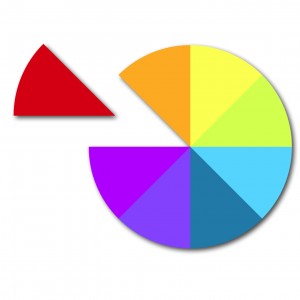I was speaking to a new friend last week, Dr. Adrian McIntyre, a smarty pants colleague who I met through a private Face Book group.
We are both studying a certain sliver of online marketing and Adrian generously offered to answer some questions that I had about online learning environments.
We got to talking about what we were marketing and I mentioned The MAKING Art Making MONEY Semester. Then Adrian offered a brilliant insight.
Art and money are a lot a like.
Here are 12 points that support this statement.
- The value of both art and money is made up. We just agree to the value.
- Art and money are relatively worthless physical objects. Unless we are talking about gold coins, the actual value of the materials that they are made of are negligible.
- Art and money are highly prized and sought after because of their scarcity. They are precious because they are limited. Too much money in circulation or too much art, a la Thomas Kindkade, and the value tanks.
- The market for art and money ebbs and flows according to their secondary markets or resale value.
- Art and money must be consumed or circulated by people or its worthless. Think about it, if an artist makes art and no one ever sees it and purchases it, it doesn’t contain value to anyone but the artist.
- Art and money are both manifestations of congealed creative energy and innovation.
- Art and money each represent self-expression, a reflection of our values. We buy brands and art that we are morally aligned with, that reflect our lifestyle, ethics, and ideals.
- Technology has sped up the markets for art and money. A rising tide of money has elevated the resale value of contemporary art. Artists don’t need to wait until they are dead to make money from the resale of their art.
- Just as it is illegal to deface currency, it is illegal to deface, mutilate, or alter it without the artist’s consent, according to the “moral rights” clause in U.S. Copyright law.
- Both art and money are capable of triggering deep emotions in people.
- The people who make art and the people who “make” money (entrepreneurs, financial traders, etc) often obsess about their craft and work ridiculously long hours.
- Art and money inspire ingenious forgery and dramatic heists.
It’s worth noting that during the most recent recession every single category of luxury tanked, including; real estate, designer clothing and accessories, wine, jewelry, automobiles, and hospitality, you name it.
What category of luxury actually went through the roof? The art market.
Why? Because wealthy folks decided to reposition their financial assets into the secondary art market.
We artists obviously don’t create a currency of direct trade. The currency we deal in is the currency of emotion.
Emotions are what we artists are really selling. We don’t sell paint stuck on canvas, musical notes hanging in the air, or footsteps patterned on a stage.
What makes you feel is different than what makes me feel.
That is why are is truly in the eye of the beholder and why the value of art is more subjective and less precise than the value of currency.
An artist’s main job is to put us in touch with our humanity.
If you do this, if you really make someone feel, inspire them, through your artistic medium, it’s priceless.
How do you think art and money are alike or different? I want to know. Please share below.




